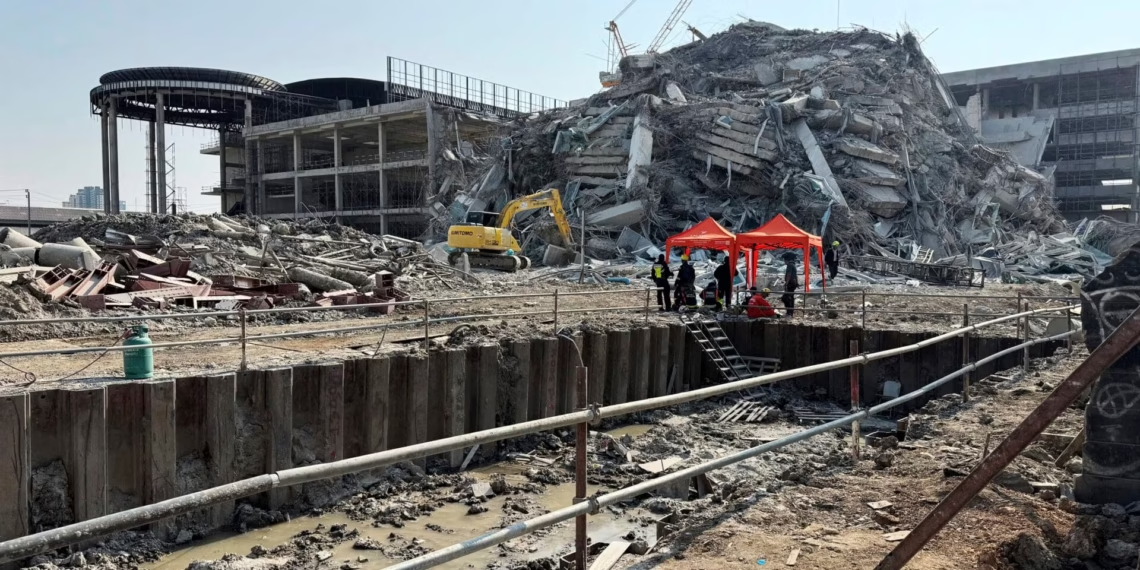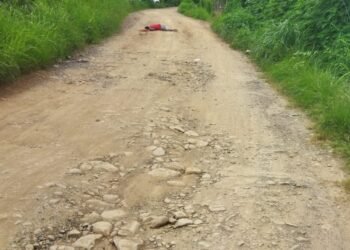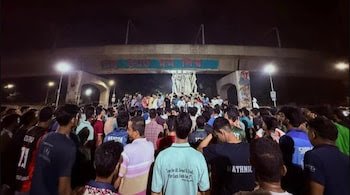The powerful 7.7-magnitude earthquake that devastated central Myanmar, has resulted in confirmed death toll of 144, which is expected to rise. Hundreds are injured and trapped as rescue efforts continue across the fractured nation.
The devastating 7.7-magnitude earthquake that ripped through central Myanmar on Friday has resulted in 144 confirmed deaths, with hundreds injured and countless individuals feared trapped. Authorities and aid organizations anticipate a significant climb in the death toll in the coming days and weeks as the full extent of the devastation becomes clear.
This powerful seismic event has left a trail of death and widespread destruction, deepening anxieties across the already fractured nation and its neighboring countries.
The first official pronouncements came in a somber televised address late Friday from Senior General Min Aung Hlaing, the leader of Myanmar’s military junta, which seized power in a 2021 coup. He reported 96 fatalities in the administrative capital of Naypyitaw, 18 in the Sagaing Region, and 30 in Kyaukse Township, part of the Mandalay Region. However, these figures represent only the initial assessments from specific areas and do not yet encompass the impact on major urban centers like Mandalay itself, nor the more remote and conflict-ridden regions.
ALSO READ: Allahabad Bar Association to Boycott Justice Varma’s Oath Ceremony!
The earthquake’s powerful tremors, originating at a shallow depth of just 10 kilometers (6 miles) approximately 20 kilometers (12 miles) north of Mandalay, reverberated across Southeast Asia. In Bangkok, Thailand, hundreds of kilometers away, residents in towering skyscrapers fled in panic as buildings swayed, and dramatic videos surfaced of water surging out of rooftop swimming pools. Tragically, the earthquake’s reach extended fatally to the Thai capital, where the collapse of an under-construction building resulted in the deaths of four individuals, highlighting the sheer force of the seismic event.
UNICEF is deeply concerned about the devastating impact of today’s earthquake in Myanmar on children and families.
Damage has also been reported in parts of Thailand.
Our teams are in affected areas to assess impact and prepare humanitarian support.
© UNICEF Myanmar pic.twitter.com/ybUMlbB59V
— UNICEF (@UNICEF) March 28, 2025
The impact was also felt across northeastern India. In Manipur, which shares a long and porous border with Myanmar, residents experienced significant tremors. While the main quake did not immediately cause widespread damage or casualties in the state, two notable aftershocks, measuring 4.3 and another estimated around 4.0, rattled the region, particularly the Imphal Valley and areas bordering Myanmar like Kamjong. Panic gripped residents, especially those in older or poorly constructed buildings in Imphal, who rushed into the streets. Though initial assessments indicated no major structural damage or loss of life in Manipur, the event served as a stark reminder of the region’s vulnerability to seismic activity, situated as it is within a highly active geological zone. This latest event follows a history of earthquakes in Manipur, including milder tremors reported in recent years, underscoring the constant threat faced by communities along the Indo-Myanmar border.
Within Myanmar, the human stories emerging from the rubble paint a grim picture. In Pyinmana Township, just outside Naypyitaw, reports speak of entire neighborhoods leveled, trapping families within their collapsed homes. Social media has become a crucial, albeit often unreliable, source of information, with harrowing images and videos showing flattened buildings at Thapyaygone Market in the capital and widespread debris blanketing streets. The absence of initial casualty figures from Mandalay, a major urban center and the country’s second-largest city, fuels concerns that the true scale of the disaster is far greater than currently reported. Residents there have described scenes of chaos, with buildings crumbling and the iconic Ava bridge, a vital artery connecting different parts of the city, reportedly collapsing – a significant blow to infrastructure and connectivity.
❗️🇲🇲 – Myanmar is experiencing scenes straight out of a disaster movie.
A major hospital in the capital, Naypyidaw, has been designated a “mass casualty area” following a powerful earthquake that struck the country on March 28, 2025.
The 7.7 magnitude quake, centered near… pic.twitter.com/SD3sgcUlff
— 🔥🗞The Informant (@theinformant_x) March 28, 2025
The earthquake has struck Myanmar at a particularly precarious time. The nation has been embroiled in a brutal civil war since the military’s ouster of the civilian government in February 2021. This ongoing conflict has already displaced hundreds of thousands, strained resources, and created significant barriers to humanitarian access. The earthquake now compounds these existing vulnerabilities, raising grave concerns about how aid will reach those most in need, particularly in areas already affected by fighting and under the control of various armed groups.
Myanmar’s ruling junta has declared a state of emergency in six regions deemed to have suffered the most significant damage: Shan state, Mandalay, Sagaing, Bago, Magway, and the administrative capital of Naypyitaw. In a terse statement, the junta pledged to “make inquiries on the situation quickly and conduct rescue operations along with providing humanitarian aid.” However, skepticism remains high regarding the junta’s capacity and willingness to effectively address the crisis, given its track record and the ongoing conflict. International aid organizations are likely to face significant challenges in navigating bureaucratic hurdles and security concerns to deliver essential supplies and assistance to affected populations.
As darkness fell on Friday, more heartbreaking details emerged from across the country. In Taungngu, a town in the central Bago region, rescue workers reported the deaths of at least ten residents, including five children, with the local hospital overwhelmed with over 30 injured individuals. The collapse of a six-story hotel in Aungpan town, Shan state, trapped an unknown number of staff and guests. Rescue teams managed to pull 16 people alive from the debris but also recovered the body of a 20-year-old female staff member. The desperate search for survivors continues, hampered by darkness, damaged infrastructure, and a lack of heavy equipment.
The Sagaing Region, already a hotbed of resistance against the junta, has also suffered significant losses, with initial reports confirming at least 18 deaths. The true extent of the damage in this and other conflict-affected regions remains largely unknown due to communication disruptions and limited access for independent observers.
The earthquake has not only caused immediate devastation but also raises long-term concerns. The loss of homes and livelihoods will undoubtedly exacerbate the existing humanitarian crisis. Damaged infrastructure, including roads and bridges, will hinder rescue and relief efforts. The psychological toll on survivors, many of whom have already endured years of conflict and instability, will be immense.
The international community is beginning to respond, with expressions of condolences and offers of assistance. However, the complex political landscape in Myanmar, with the junta in control and facing widespread opposition, will complicate the delivery of aid. Ensuring that assistance reaches all those in need, regardless of their political affiliation or location, will be a critical challenge.
The 7.7-magnitude earthquake has not only shaken the ground beneath Myanmar but has also exposed the deep fault lines within the nation. It is a crisis layered upon existing crises, demanding a swift, coordinated, and impartial response to alleviate the suffering of the affected populations and to support their long and arduous path to recovery. The coming days will be crucial in determining the true scale of this disaster and the effectiveness of the humanitarian response in a country teetering on the brink.













